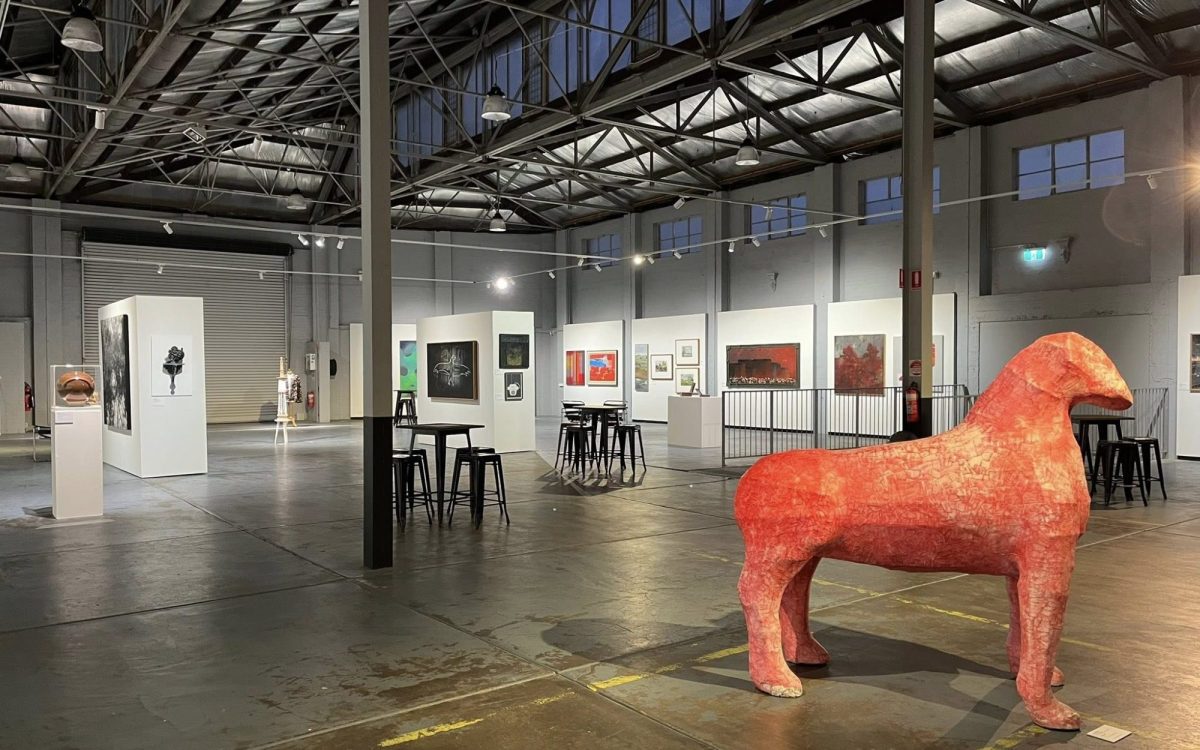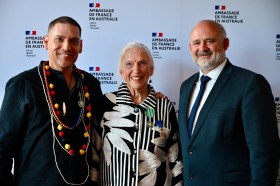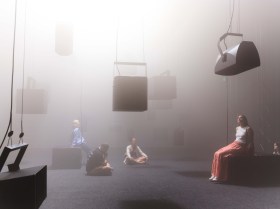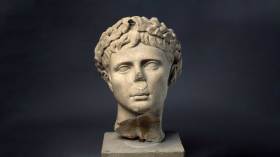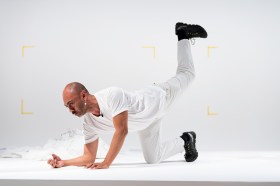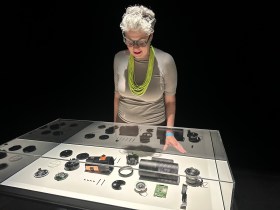Free exhibitions are a great way to encounter art, whether it is at your local gallery or a big institution.
Here is a hand-picked list of free exhibitions in WA this August.
Free exhibitions – quick links:
Hatched: National Graduate Show 2025 at Forrest Chase (2 August to 5 October)
Each year, Perth Institute of Contemporary Arts’ Hatched: National Graduate Show presents artworks by outstanding graduates from across the country. Hatched 2025 features the works of 23 artists from 20 tertiary art schools who were nominated by their lecturers and selected by a panel comprising Shannon Lyons (artist, Hatched alumni 2005, WA), Tristen Harwood (art critic and writer, VIC) and Gemma Ben-Ary (curator, PICA, WA). Hatched 2025 is curated by PICA’s newly appointed Hatched Curatorial Associate (2025-2026), Mia Palmer-Verevis.
Open Tuesday to Sunday 12-5pm.
Jump Cuts at Walyalup Fremantle Arts Centre, Moores Building Art Space (2 August to 8 September)
An exhibition by Irish artist and organiser Kate O’Shea and artist-architect Aideen O’Donovan, with invited collaborators. Long-time friends and creative partners from the southwest of Ireland, O’Shea and O’Donovan bring an experimental, collaborative practice to this immersive exhibition.
Also at Walyalup Fremantle Arts Centre are David Shrigley’s Tennis Ball Exchange (4 August to 7 September) and the 47th Print Award (16 August to 21 September).
Open everyday 10am-3pm.
Cathy Blanchflower: Aeon and Eveline Kotai: Road Trip Continued at Art Collective WA (9 August to 13 September)
Cathy Blanchflower unveils a series of new paintings in this exhibition that brings together works from her ongoing Lithic series and those created during a 2025 residency in Bangkok, Thailand. Meanwhile, panoramic paintings by Eveline Kotai trace a journey through the seasonal Karri forests of Margaret River.
Open Wednesday to Friday 11am-4pm and Saturday 12-4pm.
Artist in Print at Linton & Kay Galleries, Subiaco (11-31 August)
This group exhibition features works by Ken Done, Dean Home, Jo Darvall, Dominique Coiffait, Tommy Watson and Leon Pericles.
Open Monday to Sunday 10am-4pm.
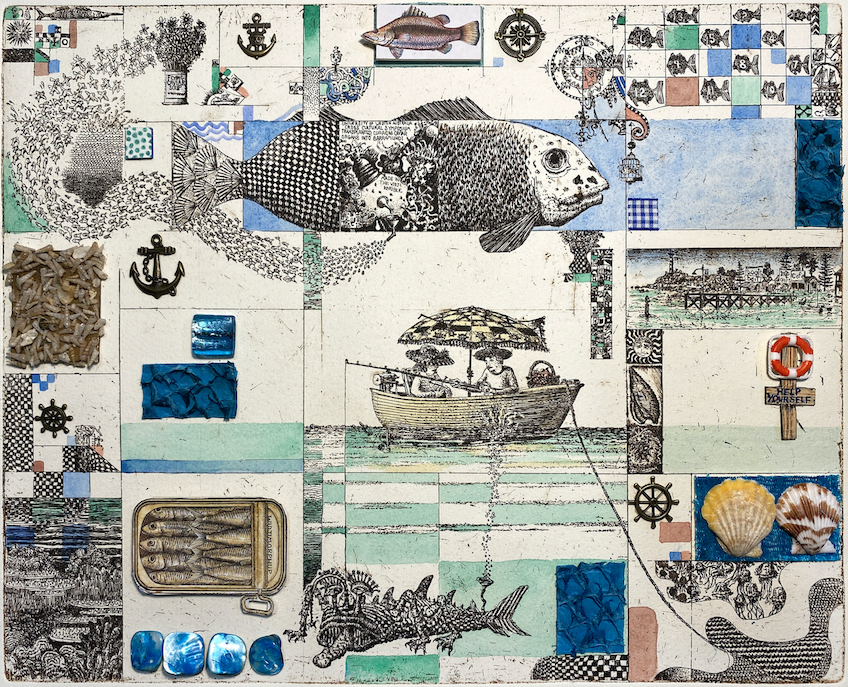
Between the Sheets at Gallery Central (15 August to 18 September)
Between the Sheets is an artists’ books exhibition featuring Australian and international artists including Beth Evans, Jennifer Marshall, Lesley Le Grove and more. The exhibition is a collaboration between Gallery Central and Gallery East.
Open Monday to Friday 11am-4.30pm.
TAFE to FAME: 125 Years of Art and Design in Perth at no. 10 Gallery (until 23 August)
From its beginnings at the Perth Technical School in 1900 to the creative hub that the North Metropolitan TAFE is today, this exhibition of works by lecturers and graduates in photography, industrial design and visual art honours the journey and impact of TAFE education in WA. Artists include Julie Dowling, Nigel Hewitt, Brian McKay, Angela Stewart and more.
Open Wednesday to Friday 11am-5pm and Saturday 12-4pm.
My Country Stays in My Dreams at Artitja Fine Art Gallery (23 August to 7 September)
My Country Stays in My Dreams continues the national exhibition program of work by the late Jaru artist, Janet Dreamer. Dreamer started painting at the age of 16 under her father’s tutelage, but it was several decades later after she joined Yarliyil Arts in Halls Creek in 2013 that she started painting in earnest and with her own vision. Her vibrantly coloured canvases bring to life an extraordinary range of flora, wildlife and water life of Old Flora Valley Station in the east Kimberley.
Open everyday 10am-4pm.
KNOW MY NAME: Australian Women Artists at Lawrence Wilson Art Gallery, University of Western Australia (until 30 August)
Know My Name: Australian Women Artists is a National Gallery touring exhibition that looks to moments when women created new forms of art and cultural commentary. This exhibition that features more than 60 artworks by artists including work by Grace Cossington Smith, Margaret Preston and Emily Kam Kngwarray.
Open Tuesday to Saturday 11am-4pm.
The West Australian Pulse 2025 at Art Gallery of Western Australia (until 31 August)
WA’s talented young artists are celebrated in this yearly showcase, gauging the pulse of young people who will influence, empower and shape the world we live in. This year’s exhibition features 61 works by 2024 Year 12 Visual Arts graduates from 37 schools across WA.
Open everyday 10am-5pm.
Silence Listening: A Midwest Truth-Telling Exhibition at Museum of Geraldton (until 31 August)
Curated by Bard, Jawi Aamba (man) Ron Bradfield Jnr and George Criddle, Silence Listening explores the colonial histories of Jambinu (Geraldton) and Mullewa. The exhibition features works by two important Yamaji artists, the late Uncle Dr Brian Dodd McKinnon and Charmaine Papertalk Green, alongside British-Australian artist George Criddle. It responds to Charmaine Papertalk Green’s concept of ‘silence listening’ – an intercultural and collaborative process addressing the violent colonial histories that have been actively denied within the settler narrative.
Open everyday 9.30am-3pm.
For a complete guide of Aboriginal art centres in WA visit the Aboriginal Art Centre Hub Western Australia (AACHWA) website.

